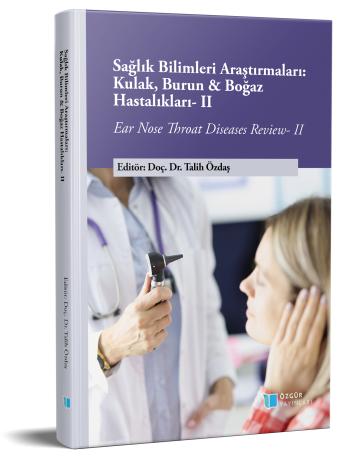
Upper Respiratory Infections
Chapter from the book:
Özdaş,
T.
(ed.)
2023.
Ear Nose Throat Diseases Review II.
Synopsis
Upper respiratory infections are most common in humans common infections. Although it is mildly avoided, it can sometimes be life-threatening. It is seen on average 6-10 times a year in children and 2-4 times in adults. Nowadays, it is seen especially in children under the age of 6, with the spread of kindergartens. Bacteria and viruses play a role in the etiology of these infections. More than one virus can cause each virus. Each virus can cause more than one infection. Influenza and parainfluenza viruses, adenovirus, respiratory syncytial virus, rhinovirus are common viral agents. Streptococcus pneumoniae, Haemophilus influenzae, Moraxella catarrhalis, Staphylococcus aureus, Streptococcus pyogenes are bacterial agents encountered in etiology. Pathogens are mostly transmitted by contact and droplets. Generally, symptoms such as fever, sore throat, cough, runny nose and nasal congestion are seen. Upper respiratory infections are mostly classified as common cold, flu, rhinosinusitis, otitis media, tonsillopharyngitis. Clinical findings are generally used for diagnosis. Isolation of the agent is important for a rational treatment. For this reason, methods such as PCR, rapid antigen recognition test, nose and throat culture are applied. Antibiotics are often preferred in the treatment of upper respiratory infections. Antibiotics are preferred for the treatment of bacterial infections. However, due to the fact that the causative agent is often a virus, an effective treatment with antibiotics may not be obtained. In viral infections, treatment is usually symptom-oriented.

